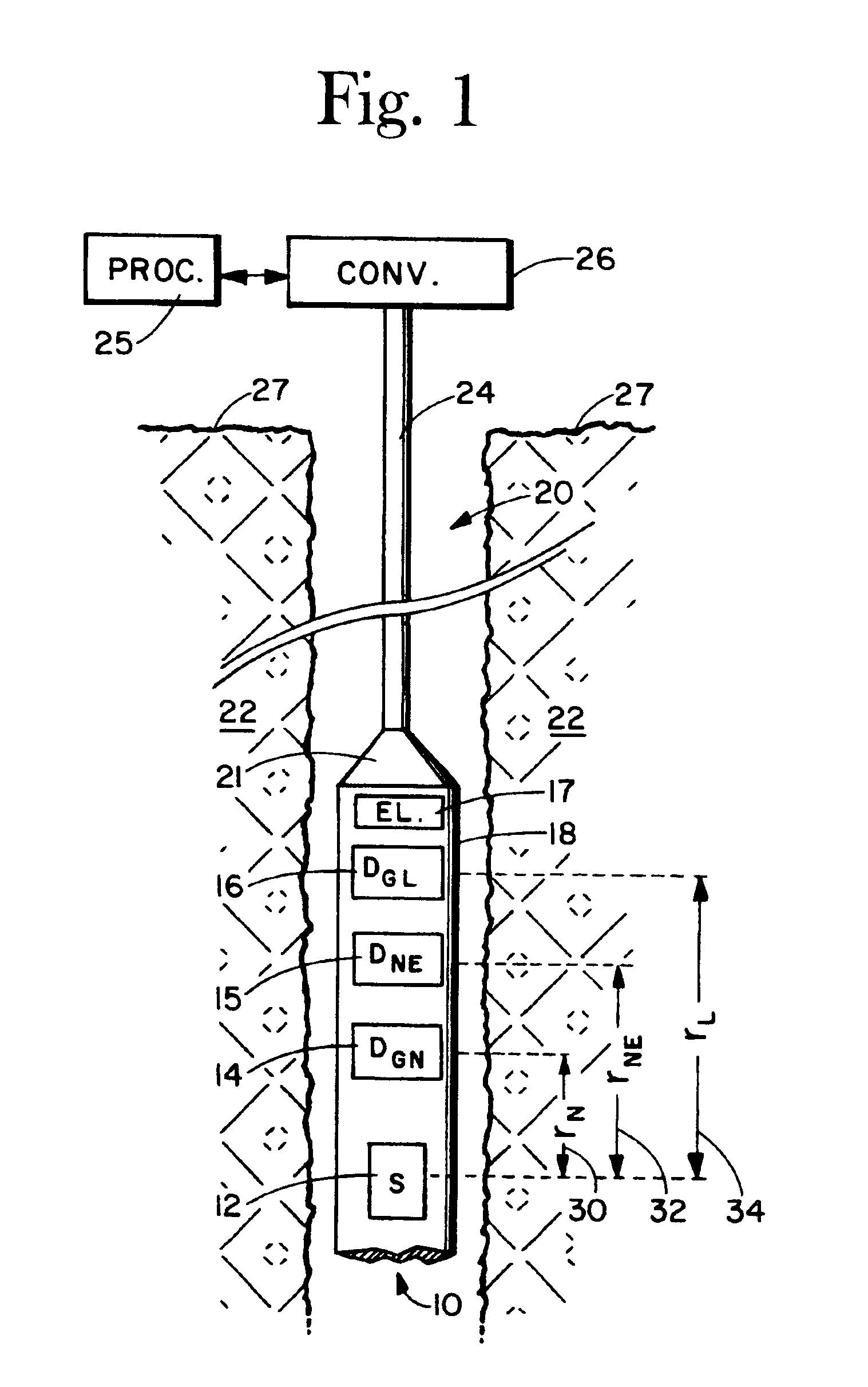Apparatus and method for determining density, porosity and fluid saturation of formations penetrated by a borehole
a technology of applied in the field of apparatus and method for determining density, porosity and fluid saturation of formations penetrated by boreholes, can solve the problems of inability to make quantitative density logs in boreholes, inability to distinguish between low porosity formations and formations, and inability to use logging tools as gas indicators
- Summary
- Abstract
- Description
- Claims
- Application Information
AI Technical Summary
Benefits of technology
Problems solved by technology
Method used
Image
Examples
Embodiment Construction
[0029]The invention set forth in this disclosure is embodied as a logging system to measure density, porosity and gas / liquid fluid saturation in earth formations penetrated by a cased or open borehole. As mentioned previously, gas / liquid fluid saturation is typically expressed as liquid saturation SW, or alternately as gas saturation SG, where SG=(1−SW). Prior to disclosing features of the model and the data processing methodology, a brief discussion of concepts underlying the measurements are appropriate.
3. Basic Concepts of the System
[0030]At least one of the measured count rates is proportional to fast neutron flux present during the sequential neutron bursts. Another measured count rate is proportional to prompt gamma radiation due to the inelastic scattering of fast neutrons off of formation and borehole nuclei during each neutron burst. Both of these measurements derive from nuclear interaction processes of neutrons in the MeV range with the nuclei and electrons of atoms compr...
PUM
 Login to View More
Login to View More Abstract
Description
Claims
Application Information
 Login to View More
Login to View More - R&D
- Intellectual Property
- Life Sciences
- Materials
- Tech Scout
- Unparalleled Data Quality
- Higher Quality Content
- 60% Fewer Hallucinations
Browse by: Latest US Patents, China's latest patents, Technical Efficacy Thesaurus, Application Domain, Technology Topic, Popular Technical Reports.
© 2025 PatSnap. All rights reserved.Legal|Privacy policy|Modern Slavery Act Transparency Statement|Sitemap|About US| Contact US: help@patsnap.com



